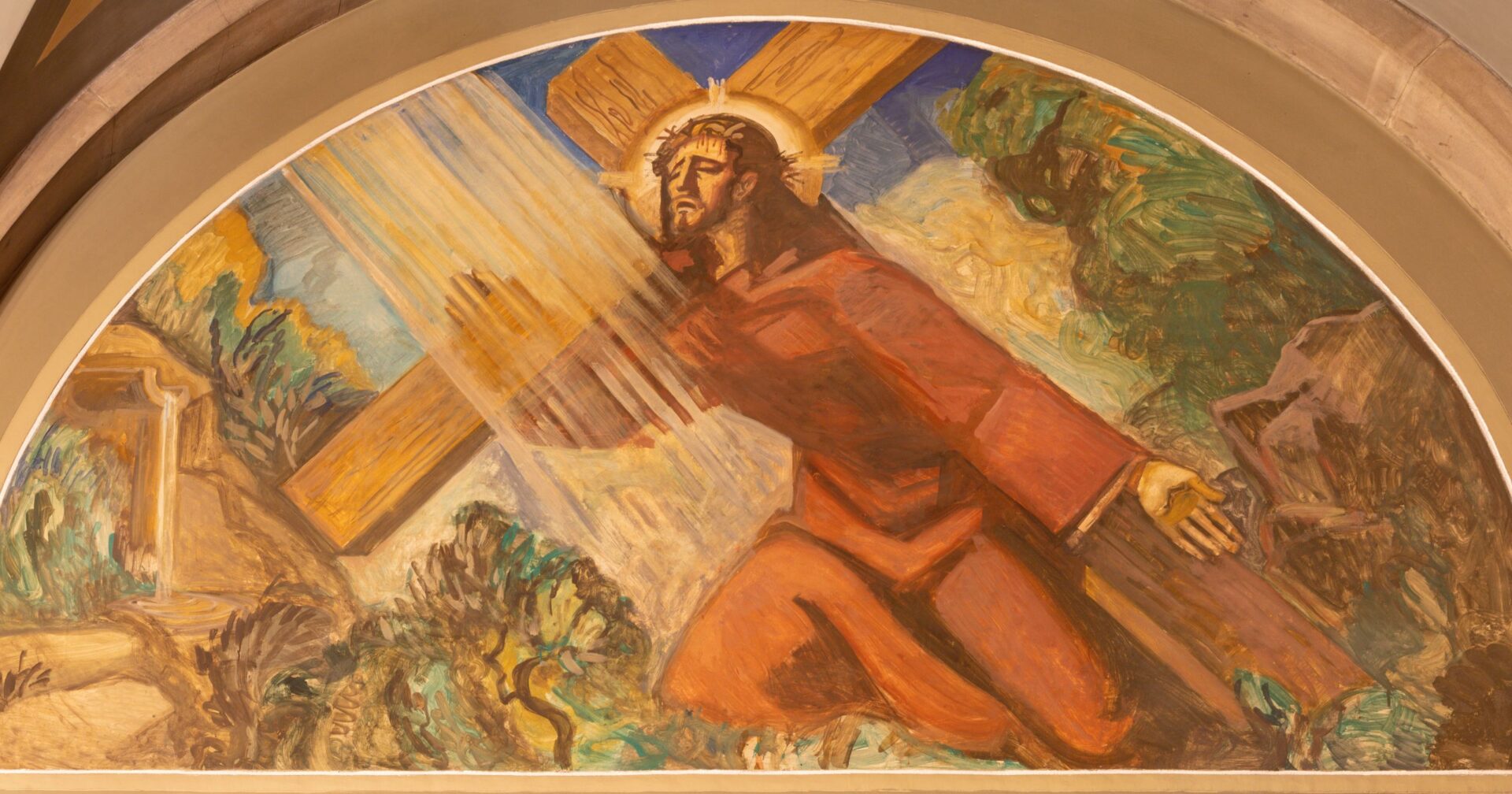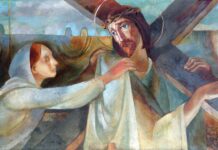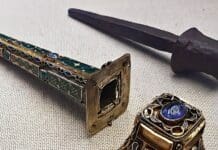Following Christ’s trial before Pontius Pilate, He was sentenced to death by crucifixion and forced to carry His cross upon which He would be crucified to Calvary. In the past two millennia the True Cross has been hidden and rediscovered many times; broken apart and dispersed in many pieces on a journey across the world. What remains of the True Cross, and where is it located today?
“They brought him to the place of Golgotha. They gave him wine drugged with myrrh, but he did not take it. Then they crucified him and divided his garments by casting lots for them to see what each should take. It was nine o’clock in the morning when they crucified him.” – Mark 15:22-25
Following the Crucifixion, the True Cross was buried in the ground at Calvary to prevent followers of Christ from trying to retrieve any relics. During Emperor Hadrian’s reconstruction of Jerusalem as Aelia Capitolina in 135 A.D., a temple to the pagan god Venus was built over the site at Calvary. Eusebius of Caesarea in the 4th century accounts:
“Accordingly they brought a quantity of earth from a distance with much labor, and covered the entire spot, concealing the holy cave beneath this massive mound. Then, they prepare on this foundation a truly dreadful sepulchre of souls, by building a gloomy shrine of lifeless idols to the impure spirit whom they call Venus.” – Life of Constantine XXVI.
Saint Helena, the mother of Constantine, traveled to Jerusalem around the year 325 A.D. in search of the buried site after having visions in her dreams. Finding the temple to Venus, she ordered it destroyed, had the ground cleared, and excavated three crosses. Unable to determine which of the three was the True Cross, she enlisted the help of Bishop Macarius of Jerusalem brought who each of the three crosses to a nearby woman that was ailing and near death. Upon touching the True Cross, the woman was miraculously healed, while the other two had no effect.
Following the discovery of the True Cross by Saint Helena, she had a church constructed on the site, the Church of the Holy Sepulchre. She left a portion of the True Cross there for those to might wish to make pilgrimage to see it, and had the rest sent to Constantinople. Theodoret of Cyrus writes:
“She had part of the cross of our Saviour conveyed to the palace. The rest was enclosed in a covering of silver, and committed to the care of the bishop of the city, whom she exhorted to preserve it carefully, in order that it might be transmitted uninjured to posterity.”
For almost three hundred years, the portion of the True Cross at Jerusalem was exhibited periodically to the faithful. During the Siege of Jerusalem in 614 A.D., the city fell to Arab conquest and the True Cross was taken as a trophy by Emperor Khosrau II. Just thirteen years later in 628 A.D., Byzantine Emperor Heraclius defeated the Persians and regained the relic, bringing it to Constantinople first and then back to Jerusalem in 630 A.D. We celebrate this event on September 14th as the Feast of The Triumph of the Cross.
Around the year 1009 A.D., Jerusalem was under Muslim rule again and the caliph ordered the Church of the Holy Sepulchre destroyed. Christians in Jerusalem had the cross hidden in the city until it was retaken by crusaders from the First Crusade in 1099 A.D. The cross then became the most sacred relic of the Kingdom of Jerusalem.
Around two hundred years later, the True Cross was captured by Saladin during the Battle of Hattin in 1187 A.D. Christian rulers, including Richard the Lion-Hearted, petitioned Saladin to ransom the cross from him, but it was never returned and was last seen in Damascus said to have been paraded around the city upside down and then dragged through the city behind Saladin’s horse, before disappearing from history.
At that point the only remaining confirmed portion of the True Cross remained in Constantinople, the same piece originally brought by Saint Helena. In 1204 A.D., the remnants suffered from the Fourth Crusade, was split into pieces, and dispersed by knights who donated them to churches and monasteries across the world.
“After the conquest of the city Constantinople inestimable wealth was found, incomparably precious jewels and also a part of the cross of the Lord, which Helena transferred from Jerusalem and was decorated with gold and precious jewels. There it attained highest admiration. It was carved up by the present bishops and was divided with other very precious relics among the knights; later, after their return to the homeland, it was donated to churches and monasteries.” – Chronica regia Coloniensis
It was famously said by the 16th-century Dutch humanist Erasmus that “So they say of the cross of Our Lord, which is shown publicly and privately in so many places, that, if all the fragments were collected together, they would appear to form a fair cargo for a merchant ship.” But a study in 1870 by French architect Charles Rohault de Fleury compared the present total volume of all True Cross relics across the world to an estimate of the True Cross’s original size. He found that only two percent remains of the original True Cross, with the rest being lost to history and time.
Today, various churches and monasteries present fragments of the True Cross stemming from the dispersal in 1204 A.D. The Church of the Holy Sepulchre in Jerusalem houses a fragment in the Reliquary of the True Cross.
Editorial credit: Renata Sedmakova / Shutterstock.com


















Very interesting. I had always heard that quote by Erasmus to be attributed to John Calvin. He must of made the same joke or copied Erasmus then!
very interesting to read it. I want you to write about the Catholic nature of Israel today. I hope you to write my request!
[…] Artigo original em: https://ucatholic.com/blog/what-happened-to-the-true-cross-that-christ-was-crucified-on/ […]
I’d only heard a high level summary about the finding of the cross by Constantine’s mother. This article has many fascinating details I’d never seen before. Especially I like knowing the origin of the Feast of the Triumph of the Holy Cross.
Blessings to read this story of the True Cross
Itss not my first time to visit this web site,
i am vsiting this web paqge dailly and obtain good facts from here
every day. http://3dncommunity.com/member.php?u=66114-AnnmarieCa
I had heard that the plaque that Pontius Pilate put on the Cross : ” Jesus of Nazareth King of the Jews ” was still attached to the True Cross when St. Helena found it . Is this a fact ? Thanks , Jeff Yorde
Probably not, otherwise she would’ve been able to identify it instantly
I Live THESE u1xy5.ga http://u1xy5.ga/!!!